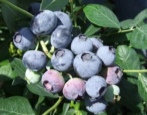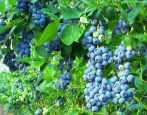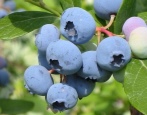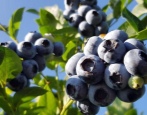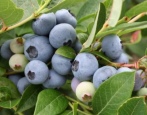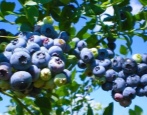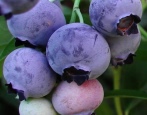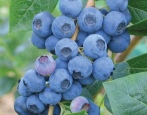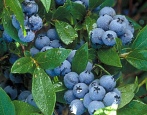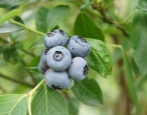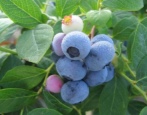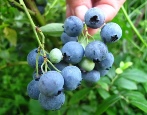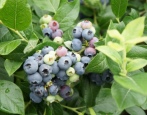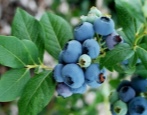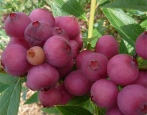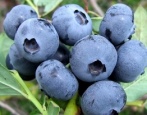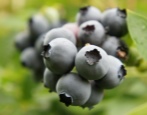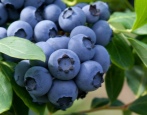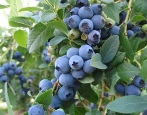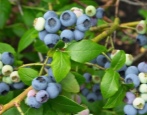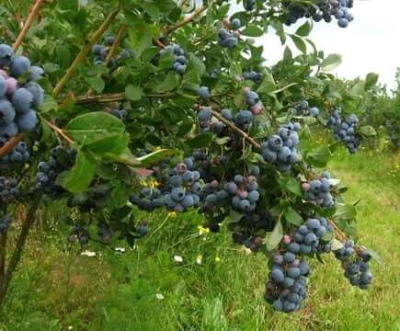
- Authors: USA
- Name synonyms: Vaccinium corymbosum Blueray
- Ripening terms: mid-season
- Growth type: tall
- Bush height, m: 1,2-1,8
- Taste: sweet and sour
- Yield: very high
- Average yield: 5-8 kg per bush
- Fruit size: large
- Fruit shape: oval
They fell in love with the fact that they can be planted in summer cottages not only for decorative purposes, for example, for zoning, but also to get a good and healthy harvest. The bush takes root in many regions of our country. In this article you will find a description of the variety, the nuances of planting and care, as well as reviews of blueberries Blurei ((Blueray).
Breeding history
Blueberry Blurey belongs to the varieties of American selection. We owe its appearance to scientists George Darrow, Arlen Draper and Frederick Kovylev. This variety is not listed in the Russian State Register, although it appeared relatively long ago - in 1955. However, this does not hinder the popularity of blueberries. Blurei has excellent characteristics such as yield, unpretentious care and others.
Description of the variety
Vaccinium corymbosum Blueray (from English Blue Ray - "blue ray"), as it is officially called, refers to tall shrubs and reaches 1.2-1.8 meters in height. A powerful, wide and erect bush with dark green leaves, slightly corrugated along the edge, among which medium-sized flowers appear in the spring.
They are grouped in inflorescences, usually of a snow-white shade. As they ripen, berries are formed from flowers that become pinkish and purple. It is a pleasure to observe this process from time to time. Once covered with white inflorescences, the bushes become carriers of blue beads.
An equally beautiful process takes place in the fall, when only leaves remain on the bush, becoming fiery red.
Fruit characteristics
Blueberries are large berries. Large oval-shaped fruits reach 2.1 cm in diameter and 2.2 grams in weight. Coloring: light blue. Skin: firm.
Taste qualities
Blury berries have good taste. Mostly they are sweet and sour with a fragrant aroma. The berries lie safe for a long time: from 10 days to 2 weeks.
Ripening and fruiting
In terms of ripening, the variety belongs to the mid-season. The fruiting period is early August. Frequency: annual.
Yield
The yield of the bush is influenced not only by correct or incorrect planting and further care, adherence to the schedule of watering and pruning, the presence of winter shelter, but also the age of the plant itself. Young Blurei at the age of the first 5 years (fruiting begins at 3), compared to an adult, gives quite few berries, no more than 3 kilograms. In the future, from one good (healthy) bush usually comes from 5 to 8 kilograms on average.
Growing regions
Blueberries of this variety are undemanding to temperatures. They love to plant and collect it both in central Russia and in the harsh regions of the Urals and even Siberia.
Self-fertility and the need for pollinators
Blurey belongs to self-fertile (self-pollinated) crops, which gives it another advantage. When planting a bush, you do not have to worry about purchasing a pollinator variety.
Growing and care
Blueberries are propagated and grown in many different ways. Among the first: cuttings, propagation by seeds, basal processes, division of the mother bush.The processes do not require you to be an experienced gardener - she is picky and takes root well.
Planting is carried out in spring or autumn (option for growing in warm areas). Cuttings are prepared in advance. Ideally, if other crops have not grown in the chosen place in recent years: the soil should be fertile.
Sawdust, pine needles, sulfur and mineral fertilizers (the latter are mandatory) are added to a pit 60x60 cm and 50 cm deep. At the same time, the roots are evenly spaced along the ground and sprinkled with earth, which must be tamped moderately. The trunk of the bush is deepened into the ground by 3 centimeters. The plant is watered, then the earth is added again (since the soil shrinks a little), and watered again. In the future, blueberries need mulching.
The distance between the bushes, if there are many cuttings, is 1.5 meters. If the landing is carried out in rows, the distance between them should be 4 meters.
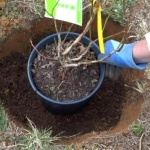
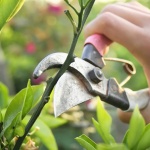
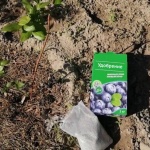
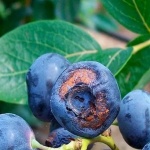
Winter hardiness and the need for shelter
Not every fruiting bush has good frost resistance. Blurey can withstand temperatures up to -34 ° C on average. Young immature plants (and just for the sake of the calmness of the gardener's soul) are sheltered for the winter, watering, 15 cm mulching, hilling and laying with dry foliage or spruce branches occurs beforehand.
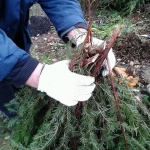
Location and soil requirements
For planting a bush, loose, peaty-sandy or peaty-loamy soil is needed. In any case, it should have a low acidity (pH 4.3-4.8). Many berry bushes, if not growing, then simply do not bear fruit on acidic soil. Like most of these bushes, blueberries grow well in sunny, calm or weakly gusty areas.
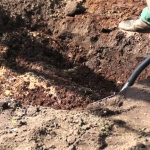

Review overview
Gardeners who buy Blurey blueberries note that the planting site is a key condition for a successful harvest. In a shady area, many plants do not have berries even in the 4th year. It is also important to pay attention to watering and maintaining moisture: fruit-bearing bushes often do not tolerate drying winds well.
Pruning is advised to do only in the spring, as in winter the variety can "get scared" and freeze.
Gardeners also note that cuttings grown from seeds subsequently begin bearing fruit 1-2 years later. When buying, the first thing to look at is the roots: the further successful growth of the plant depends on them. In general, all owners of the berry note more advantages than disadvantages.
